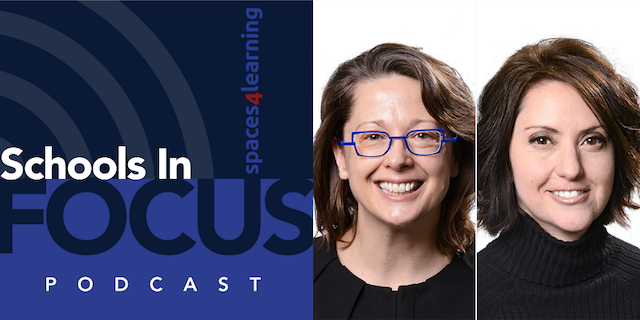Schools In Focus: COVID-19 and the Impact on School Design
- By Yvonne Marquez
- 05/11/20
Schools In Focus is a Spaces4Learning podcast dedicated to K-12 school design, planning, and management. Each episode will feature a conversation with industry experts, facility managers, architects, and thought leaders on topics related to school facilities. Catch up on previous episodes here.
Today's episode is about the coronavirus' impact on school design and ways schools can safely reopen.
Schools In Focus, Episode 4: COVID-19 and the Impact on School Design

With the 2019-2020 school year winding down to a close, school leaders look ahead to the fall as they figure out the best way to safely reopen schools. From classroom layouts to staggered scheduling to transportation and food service, there’s much to consider, especially when it comes to the health and safety of students and staff. Here at Spaces4Learning, we’re particularly interested in how COVID-19 will impact school design.
I spoke with two designers, Sylvia Kowalk and Robin Randall from Legat Architects, who are imagining new ways learning environments can accommodate students during this pandemic. We discussed design options currently available to schools that can help with social distancing in facilities, what we can learn from other countries who have already reopened, and the long-term impacts of COVID-19 to educational environments.
This episode was brought to you by School Specialty.
School Specialty is a leading provider of educational solutions from crayons to curriculum to complete learning environments. Today, as schools prepare to re-open, they are committed to providing the products and expert guidance needed to ensure schools can become and remain safe spaces when students return. And every day after. School Specialty. Transforming more than classrooms.
Where to Listen
Schools In Focus is available on Apple Podcasts, Google Play, and Stitcher. Subscribe today, or listen below!
About the Author
Yvonne Marquez is senior editor of Spaces4Learning. She can be reached at [email protected].